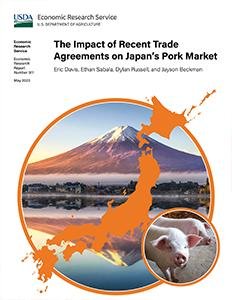Pork industry leaders converged in Washington this April amid a backdrop of intensifying trade tensions, anxiously delving into the labyrinthine effects of tariffs and articulating shifting priorities for U.S. pork exports. The recent implementation of new tariffs on pork—most notably China’s imposition of a staggering 172% levy on American pork products—has rendered competition in that market nearly unattainable for domestic producers. Tariffs, paradoxically, make it both easier and harder to compete: while some rivals are pushed out, costs ricochet throughout the value chain.
Scott Hays, executive director of the Missouri Pork Association, captured an air of cautious optimism but admitted considerable concern over unresolved issues in trade relations with China—a colossal and unpredictable customer for U.S. swine meat components typically shunned by American consumers but favored elsewhere. “There’s so much there,” Hays remarked before a House Agriculture Committee session, “and I don’t know if it gets resolved real soon.” Disruption from external pressures continues to weigh heavily across all operational facets; such uncertainty can dissolve margins overnight.
For context: about 25% of American pork products are exported each year worldwide. Mexico sits as the industry’s principal export market—a position vulnerable to abrupt shifts should retaliatory tariffs be enacted or prolonged. Canada also occupies a strategic niche since many young piglets integral to Midwestern operations are sourced northward across that increasingly complicated border. Thus integrated is the system that even seemingly insular decisions reverberate through Iowa feedlots or Minnesota finishing barns weeks later.
Financial distress isn’t theoretical anymore—it’s an actuality felt viscerally among producers who recall earlier downturns as milder than today’s adversity. Some suggest we’re navigating through an environment surpassing even the turmoil faced during the late nineties’ crisis years. Why do these metrics matter? If you consider $7 per pig—the estimated loss if Chinese demand were replaced or lost altogether—the cumulative impact stresses not only profitability but sectoral survival itself.
Lori Stevermer from the National Pork Producers Council explained how cross-border interdependency magnifies every legislative tremor from either direction; higher input costs on imported Canadian piglets squeeze cash flows just as thoroughly as diminished export orders harm gross receipts again at quarter-end reviews.
During these key discussions in Washington D.C., trade diversification surfaced repeatedly—not merely easing access within China but also targeting emergent markets like Vietnam, India, and Africa where fresh consumer segments might eventually absorb some volume displaced by lockdowns elsewhere.
Intriguingly though (and here is where some confusion can arise), despite widespread hardship warnings from officials about potential job losses due to shrinking exports—and occasional calls for administrative intervention with policy relief—Hays disclosed producers have yet not formally sought federal aid under current circumstances. While this may seem contradictory given mounting pressure and evidence of red ink accumulating throughout smaller family farms especially; sometimes the inertia around seeking government intervention outpaces economic realities simply because farmers maintain hope regulation will shift resolutely toward open markets soon enough.
The complexity escalates when factoring in rhetoric surrounding retaliation hiking import duties by trading partners such as Mexico or Canada after U.S.-origin tariffs escalate artificially competitive behaviors throughout global meats markets creating perpetual volatility cycles that regulators struggle even to partially stabilize day-to-day. Simultaneous ambitions—to cut costs internally while growing shares externally against mercurial policy winds—reveal themselves abruptly when agendas shift halfway through committee debates: sometimes more focus lands on logistics one week than diplomatic wrangling another time altogether!
Occasionally overlooked amidst headline-grabbing numbers: producer sentiment remains incredibly variable between states depending upon proximity to key export routes or feeder networks supplying inputs at scale. Missouri producers bracing for negative impacts aren’t necessarily facing precisely what their Texan compatriots encounter weekly—the ripple effects play out differently along each node within North America’s dense livestock network.
Despite entreaties directed at policymakers—and extended roundtable analyses dissecting tariff repercussions ad nauseam—the upshot is strikingly clear while containing subtle nuance beneath its surface-level cacophony: without urgent recalibration toward greater international cooperation (yet not all agree exactly how soon), domestic stability may abate further before hopes materialize.
Trade policies seem arcanely procedural until they manifest directly through fluctuating check-off revenues tallied monthly by exasperated accountants ground-side; intricate formulae determining quotas end up translating directly into whether refrigerated semis haul full loads toward Houston ports—or stand idle days longer than anyone budgeted back at last winter’s cost projections.
In essence—even acknowledging fluctuations caused inadvertently by deliberate policy action—U.S. pork still sits at a precarious crossroads shaped primarily by macroeconomic moves several nations away rather than specific actions any president alone could untangle rapidly should they choose tomorrow morning.
What emerges unmistakably inside these ad hoc D.C meetings isn’t simply alarmism—but adaptation underway involving stalwart negotiation tactics fused with cautious hopefulness grounded less in idealized forecasts and more so tethered intrinsically enough (despite countervailing impressions) to daily shipments leaving loading bays nationwide regardless which customs official waves them forward next week—or requests additional paperwork first instead!

